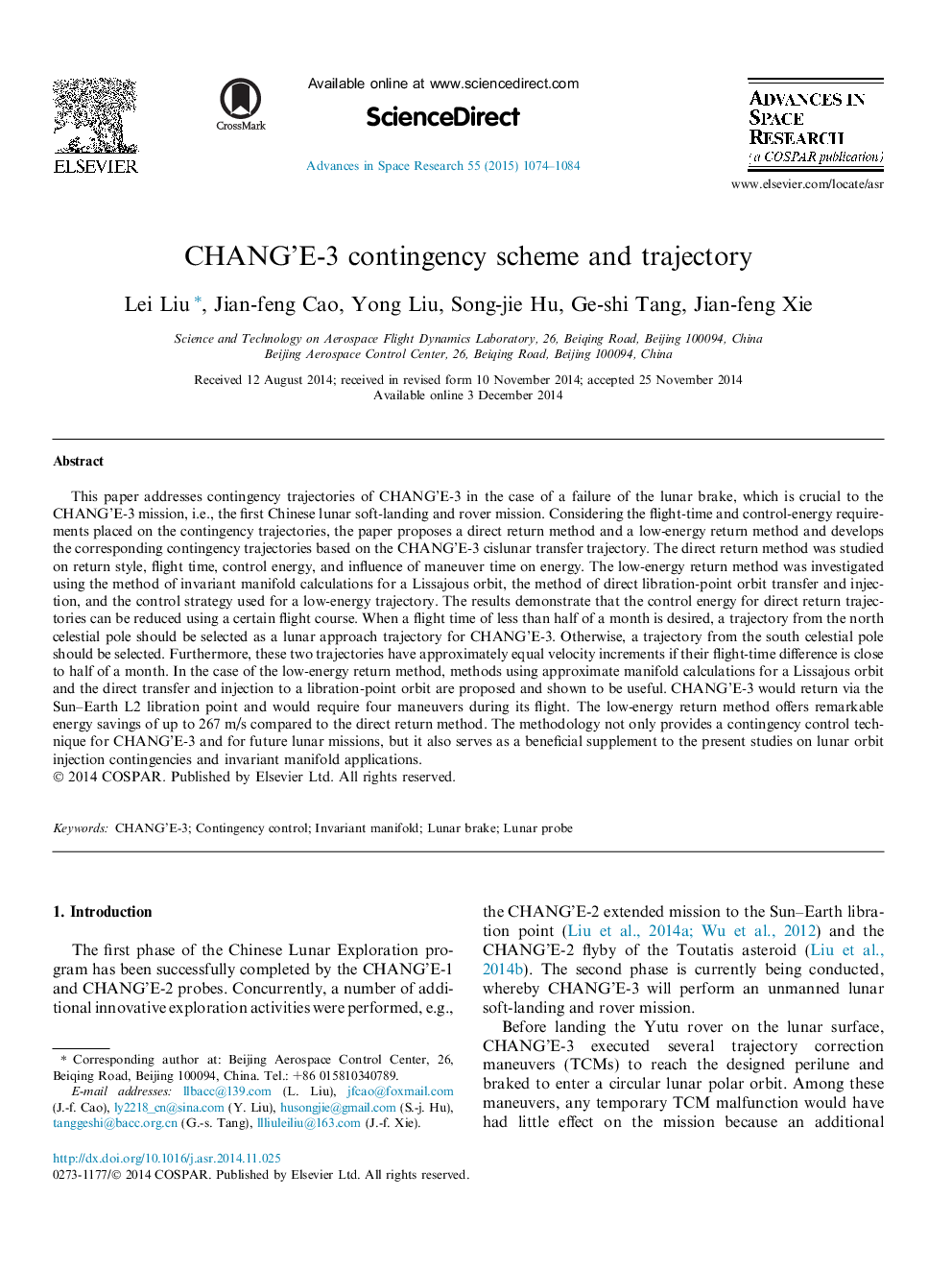| Article ID | Journal | Published Year | Pages | File Type |
|---|---|---|---|---|
| 10694234 | Advances in Space Research | 2015 | 11 Pages |
Abstract
This paper addresses contingency trajectories of CHANG'E-3 in the case of a failure of the lunar brake, which is crucial to the CHANG'E-3 mission, i.e., the first Chinese lunar soft-landing and rover mission. Considering the flight-time and control-energy requirements placed on the contingency trajectories, the paper proposes a direct return method and a low-energy return method and develops the corresponding contingency trajectories based on the CHANG'E-3 cislunar transfer trajectory. The direct return method was studied on return style, flight time, control energy, and influence of maneuver time on energy. The low-energy return method was investigated using the method of invariant manifold calculations for a Lissajous orbit, the method of direct libration-point orbit transfer and injection, and the control strategy used for a low-energy trajectory. The results demonstrate that the control energy for direct return trajectories can be reduced using a certain flight course. When a flight time of less than half of a month is desired, a trajectory from the north celestial pole should be selected as a lunar approach trajectory for CHANG'E-3. Otherwise, a trajectory from the south celestial pole should be selected. Furthermore, these two trajectories have approximately equal velocity increments if their flight-time difference is close to half of a month. In the case of the low-energy return method, methods using approximate manifold calculations for a Lissajous orbit and the direct transfer and injection to a libration-point orbit are proposed and shown to be useful. CHANG'E-3 would return via the Sun-Earth L2 libration point and would require four maneuvers during its flight. The low-energy return method offers remarkable energy savings of up to 267Â m/s compared to the direct return method. The methodology not only provides a contingency control technique for CHANG'E-3 and for future lunar missions, but it also serves as a beneficial supplement to the present studies on lunar orbit injection contingencies and invariant manifold applications.
Keywords
Related Topics
Physical Sciences and Engineering
Earth and Planetary Sciences
Space and Planetary Science
Authors
Lei Liu, Jian-feng Cao, Yong Liu, Song-jie Hu, Ge-shi Tang, Jian-feng Xie,
